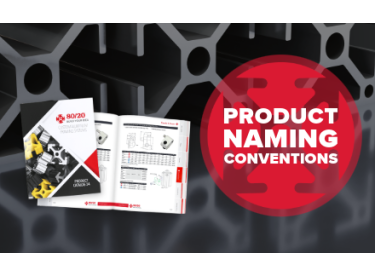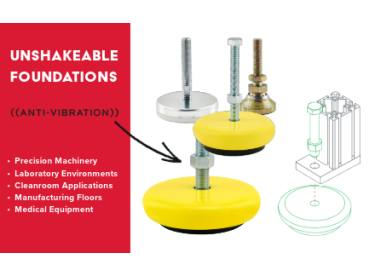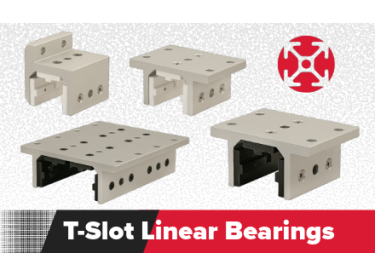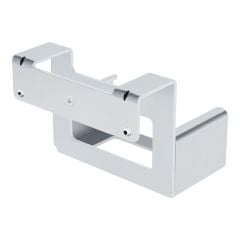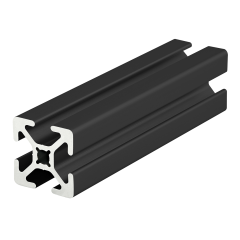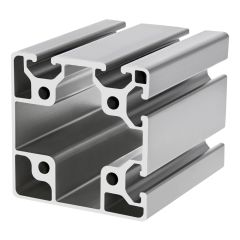A Guide to 80/20 T-Slot Profile Naming Conventions
A Guide to 80/20 T-Slot Profile Naming Conventions
80/20’s extruded aluminum T-slot profiles have become synonymous with innovative design and adaptability, especially for applications where precision and versatility are required. However, simply navigating the vast array of profile choices available can be a daunting task without a clear understanding of 80/20’s naming conventions.
But don’t worry. Even if you don’t know your 10 Series from a hole in the ground, this article will hopefully take the mystery out of the 80/20 T-slot profile names and help you select the profile that’s exactly right for your project.
Understanding the Basics
Before delving into the naming conventions, it's crucial to grasp the fundamental structure of an 80/20 T-slot profile name. The naming convention typically follows this pattern:
[Series Number]-[Profile Size]x[Profile Size/Shape]-[Additional Features]
Series Number. The series number refers to the specific product line or category of T-slot profiles. Load capacity is profile-specific for applications, and structural requirements.
Profile Size. The profile size denotes the width of the T-slot, typically specified in inches or millimeters.
Profile Size/Shape. Depending on its value, the profile size/shape either indicates the height of the T-slot (in inches or millimeters) or the number of available T-slot channels in the profile. *There may be some exceptions to this rule.
Additional Features. This part of the name highlights any unique features or attributes of the profile, such as special coatings. Other machining services such as pre-drilled holes for fasteners can be added as an additional service.
Decoding the Naming Convention
Series Number
Example: "10" in 10 Series profiles.
The series number represents the broader category to which the profile belongs, based on general profile size. Generally speaking, it breaks down as follows:


Profile Size/Shape
Example: "1515" in 15 Series 1.50" x 1.50" profiles.
In some cases, this value indicates the width and height of the T-slot profile in inches or millimeters. In others, it might denote the number of available channels in a profile. Generally speaking, if the last two digits are divisible by 5, this indicates the profile’s height (a 1515 profile is 1.50” wide and 1.50” high). If the last two digits aren’t divisible by 5, this indicates the number of available channels in the profile (a 1503 profile is 1.50” wide and 1.50” high, with 3 sides slotted with channels).
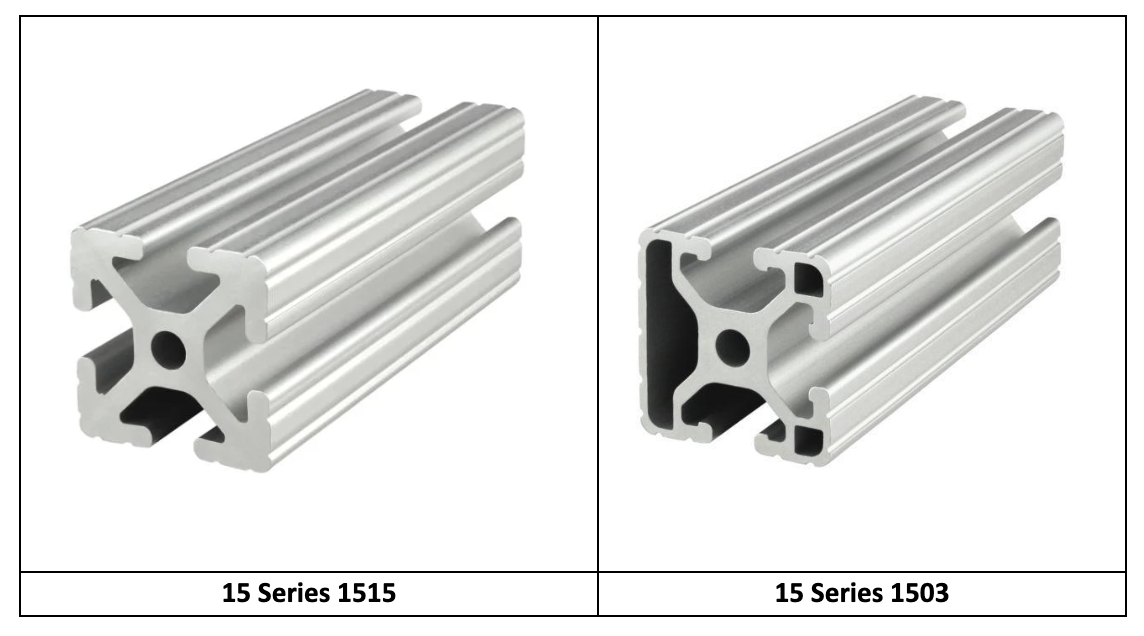

Admittedly, this can get a little confusing, as different series may have identical profile size/shape values. For example, the 15 Series 3030 profile is 3.00” x 3.00”. However, the 30 Series 30-3030 profile is 30mm x 30mm. In most cases, the fractional/imperial sizes/shapes will be listed without a leading series number (1010, 1020, 2020) while the metric sizes/shapes will include the series number (20-2020, 20-2040, 30-3030).
One thing to keep in mind is that the series number can make all the difference. For example, a 10 Series 2020 is 2.00” x 2.00”, but since it’s in the 10 series, it’s based on the 1.00” profile base. So it’s going to resemble a profile that’s “two 1.00” profiles wide and two 1.00” profiles tall” (meaning it’s going to have 2 T-slot channels on each side). Conversely, a 20 Series 20-2020 is 20mm x 20mm, but it’s based on the 20mm base (so it only has a single T-slot channel on each side).
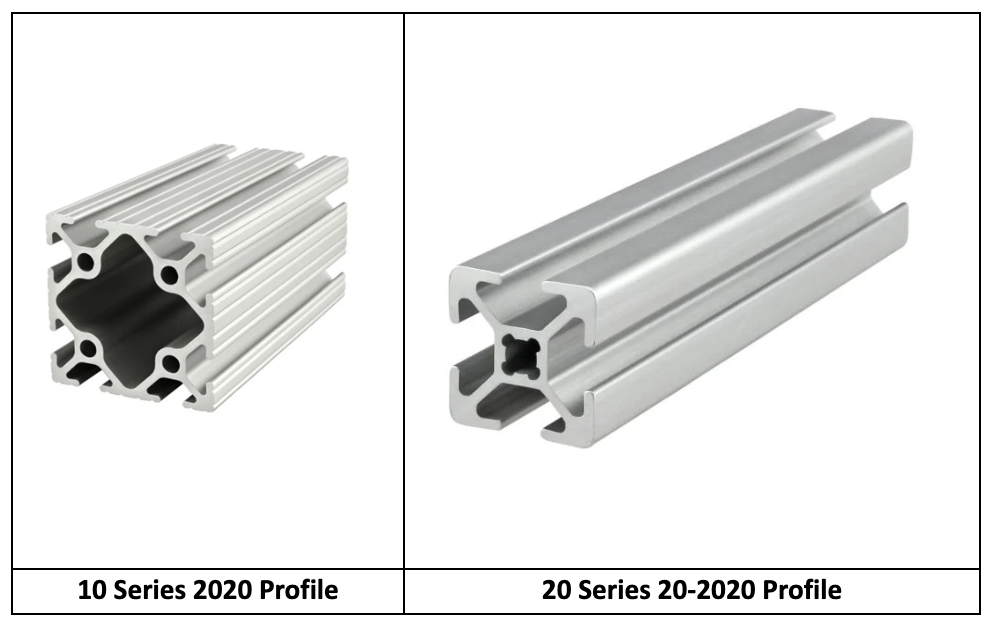

Additional Features
Example: "20-2020-Black-FB" in 20 Series 20mm x 20mm profiles in fully anodized black
This part of the name provides information about any additional features or modifications to the standard profile. In this case, the profile has a black anodized coating for enhanced durability and a sleek appearance.
Some additional features include:
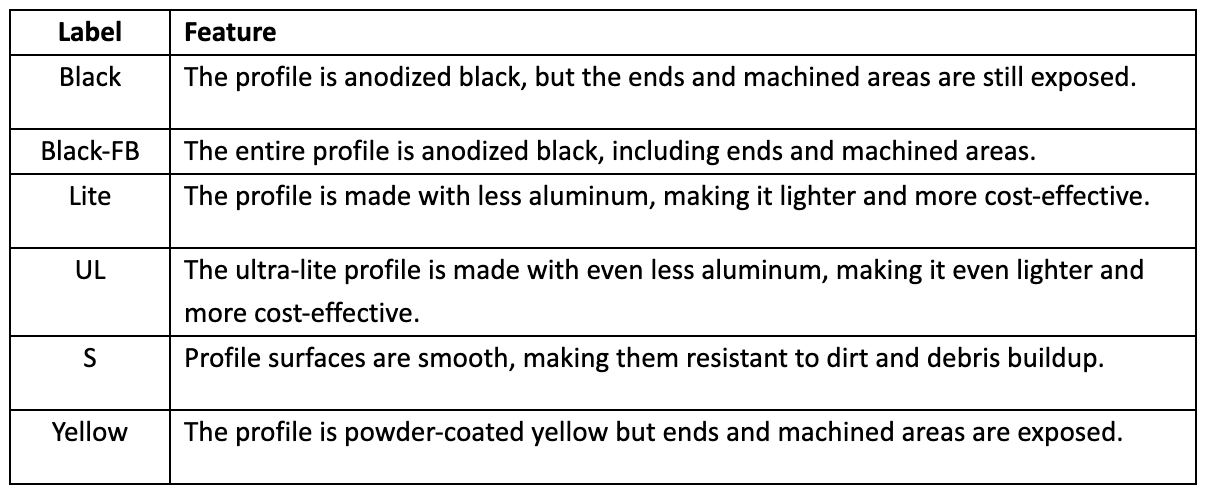

So putting it all together, a 1530-ULS-Black profile would be a 15 Series profile measuring 1.50” x 3.00” that is ultra-lite and anodized black with smooth surfaces.
Practical Considerations
Application-Specific Features. Pay attention to additional features specified in the profile name. We can provide additional services such as machining pre-drilled holes, special coatings, or specific design elements on request. These can enhance the profile's suitability for certain applications.
Versatility vs. Specialization. While some series are versatile and widely applicable, others may be specifically designed for certain industries or applications. Choose a series that aligns with your project requirements.
Understanding 80/20 Naming Conventions
Cracking the code of 80/20 T-slot profile naming conventions is the key to unlocking a world of possibilities in modular extruded aluminum framing. Armed with an understanding of series numbers, profile sizes/shapes, and additional features, you can confidently navigate the vast selection of profiles in our online store to find the perfect fit for your project.

